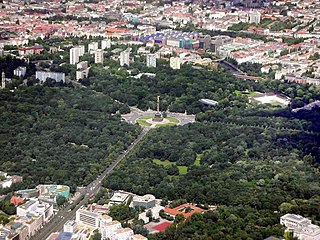 W
WThe Tiergarten is Berlin’s most popular inner-city park, located completely in the district of the same name. The park is 210 hectares in size and is among the largest urban gardens of Germany. Only the Tempelhofer Park and Munich's Englischer Garten are larger.
 W
WAltgermanische Wisentjagd, or Altgermanische Büffeljagd, is an outdoor sculpture by Fritz Schaper, installed along Fasanerieallee in the Tiergarten, Berlin, Germany.
 W
WAmazone zu Pferde is an outdoor 1895 bronze equestrian statue by Prussian sculptor Louis Tuaillon, installed in Tiergarten in Berlin, Germany. The name of the artwork refers to the Amazon warriors, a nation of "all women" warriors of Iranian origin, who inhabited the regions around the Black Sea and Eurasian steppes from the 2nd millennium BC, until the start of the Early Middle Ages.
 W
WThe Beethoven-Haydn-Mozart Memorial is an outdoor 1904 memorial to the classical composers Ludwig van Beethoven, Joseph Haydn and Wolfgang Amadeus Mozart, designed by Rudolf and Wolfgang Siemering and located in Tiergarten, Berlin, Germany. The monument was commissioned by Kaiser Wilhelm II. The monument suffered considerable damage during WWII and was not fully restored until 2007. After two years of restoration works, the Beethoven-Haydn-Mozart Denkmal was re-erected that year, providing the revitalized monument that can be seen today.
 W
WThe Victory Column is a monument in Berlin, Germany. Designed by Heinrich Strack after 1864 to commemorate the Prussian victory in the Danish-Prussian War, by the time it was inaugurated on 2 September 1873, Prussia had also defeated Austria and its German allies in the Austro-Prussian War (1866) and France in the Franco-Prussian War (1870–71), giving the statue a new purpose. Different from the original plans, these later victories in the so-called unification wars inspired the addition of the bronze sculpture of Victoria, the Roman goddess of victory, 8.3 metres (27 ft) high and weighing 35 tonnes, designed by Friedrich Drake. Berliners have given the statue the nickname Goldelse, meaning something like "Golden Lizzy".
 W
WThe Bismarck Memorial is a prominent memorial statue in the Tiergarten in Berlin dedicated to Prince Otto von Bismarck, Minister President of the Kingdom of Prussia and the first Chancellor of the German Empire. It was sculpted by Reinhold Begas. It is one of 250 memorials to Bismarck worldwide.
 W
WBison is an outdoor 1902 bronze sculpture of a bison by German sculptor Rudolf Siemering, installed in Tiergarten, Berlin, Germany.
 W
WThe Carillon in Berlin-Tiergarten is located in a freestanding 42m-tall tower next to the House of World Cultures, near the Chancellery in the northeastern part of Berlin's central Tiergarten park. It is a large, manually played concert instrument, comprising 68 bells weighing a total of 48 metric tonnes connected to a keyboard spanning 5½ fully chromatic octaves; the largest bell weighs 7.8 tonnes. The carillonneur sits in a playing cabin in the middle of the bells and plays with his fists and feet on a baton-and-pedal keyboard. The purely mechanical action makes it possible to play all dynamic gradations, from very soft to very loud.
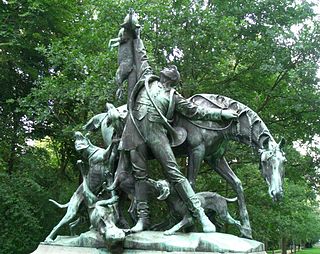 W
WChurfürstliche Fuchsjagd, also known as Die Fuchsjagd zur Kaiserzeit or Zeitgenössische Fuchsjagd, is an outdoor 1904 sculpture by Wilhelm Haverkamp, installed at Fasanerieallee in the Tiergarten, Berlin, Germany.
 W
WEberjagd um 1500 is an outdoor sculpture by Karl Begas, installed at Fasanerieallee in Tiergarten, Berlin, Germany.
 W
WThe Goethe Monument is an outdoor 1880 memorial to German writer and statesman Johann Wolfgang von Goethe by Fritz Schaper, located in Tiergarten in Berlin, Germany. The sculpture's base depicts the allegorical figures of Drama, Lyric Poetry, and Science.
 W
WDer Große Stern is the central square of the Großer Tiergarten park in Berlin; the Berlin Victory Column is sited in it.
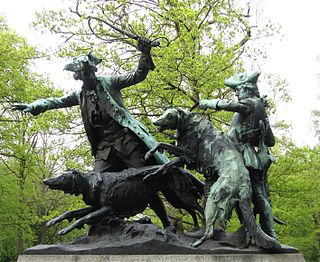 W
WHasenhatz zur Rokokozeit, or Hasenhatz der Rokokozeit, is an outdoor sculpture by Max Baumbach, installed at Fasanerieallee in the Tiergarten, Berlin, Germany.
 W
WThe Lessing Monument is a monument to Gotthold Ephraim Lessing by Otto Lessing, installed at Tiergarten in Berlin, Germany.
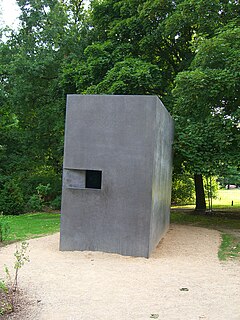 W
WThe Memorial to Homosexuals persecuted under Nazism in Berlin was opened on 27 May 2008.
 W
WThe Memorial to the Sinti and Roma Victims of National Socialism is a memorial in Berlin, Germany. The monument is dedicated to the memory of the 220,000 – 500,000 people murdered in the Porajmos – the Nazi genocide of the European Sinti and Roma peoples. It was designed by Dani Karavan and was officially opened on 24 October 2012 by German Chancellor Angela Merkel in the presence of President Joachim Gauck.
 W
WPony und Knappe is an outdoor 1896 bronze sculpture by German sculptor Erdmann Encke, installed in Tiergarten in Berlin, Germany.
 W
WThe Richard Wagner Monument is a memorial sculpture of Richard Wagner by Gustav Eberlein, located in Tiergarten in Berlin, Germany. It was created during 1901–1903 and is installed along Tiergartenstraße across from the Indian Embassy. It depicts Wagner in a seated pose and is covered by a roof.
 W
WDer Rufer is a bronze sculpture by Gerhard Marcks. One statue is installed in the Tiergarten in Berlin, Germany. Others are installed in Bremen, Germany, and Perth, Western Australia. The statue is of a barefooted man in a robe, cupping his hands to his mouth as if shouting, and is dedicated to victims and survivors of torture.
 W
WThe Soviet War Memorial is one of several war memorials in Berlin, capital city of Germany, erected by the Soviet Union to commemorate its war dead, particularly the 80,000 soldiers of the Soviet Armed Forces who died during the Battle of Berlin in April and May 1945.
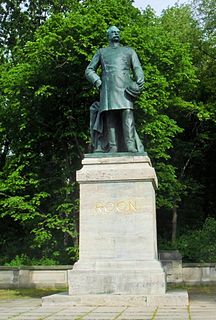 W
WThe statue of Albrecht von Roon is an outdoor 1904 monument to Albrecht von Roon by Harro Magnusson, installed in Tiergarten in Berlin, Germany.
 W
WThe statue of Helmuth von Moltke the Elder by Joseph Uphues is located near the Berlin Victory Column in the Tiergarten, Berlin.
 W
WA statue of Theodor Fontane by German sculptors Max Klein and Frtz Schaper is installed at Großer Tiergarten in Berlin, Germany.
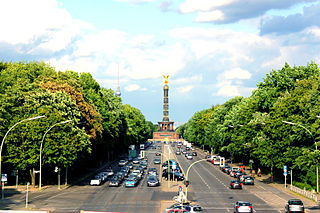 W
WThe Straße des 17. Juni, is a street in central Berlin, the capital of Germany. Its name refers to the 17 June 1953 uprising in East Germany. It is the western continuation of the boulevard Unter den Linden. It runs east–west through the Tiergarten, a large park to the west of the city centre. At the eastern end of the street is the Brandenburg Gate and the Platz des 18. März, it then passes the Soviet War Memorial before passing either side of Victory Column (Siegessäule) in the middle of the park, and out of the park through the Charlottenburg Gate, terminating about half a kilometre later at Ernst-Reuter-Platz. The street is a section of the main western thoroughfare radiating out from the centre of Berlin so the road continues to the west of Ernst-Reuter-Platz, the first section of which is called Bismarckstraße.
 W
WVolksgesang is a sculpture by Louis Sussmann-Hellborn, installed in the Tiergarten in Berlin, Germany.